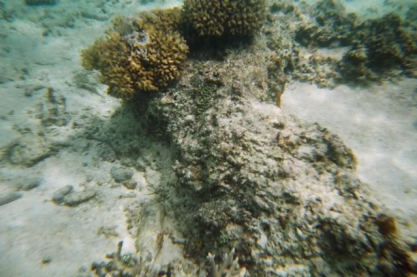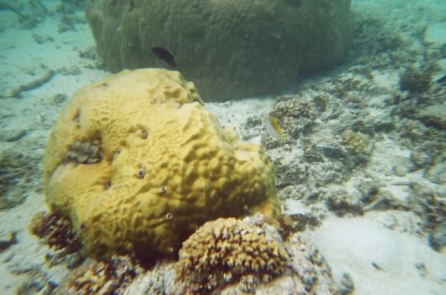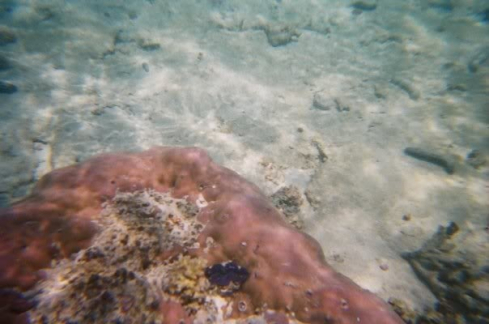Can someone please tell me which of these is the Maxima and which is the Crocea? The first three pics go together and the last two go together. For clarification on the last two the ribs are not as pronounced as the first and the scutes are almost non existent but the notable ones are toward the upper margin. Please let me know what you think and why. Thanks.





Navigation
Install the app
How to install the app on iOS
Follow along with the video below to see how to install our site as a web app on your home screen.
Note: This feature may not be available in some browsers.
More options
You are using an out of date browser. It may not display this or other websites correctly.
You should upgrade or use an alternative browser.
You should upgrade or use an alternative browser.
Which is which?
- Thread starter Ltlevil1
- Start date
- Tagged users None
OK let's do it this way. I wanted an unbiased opinion without saying too much but the pictures above are all of the same clam I got last week. I was trying to figure out if it was truly a crocea or maxima and then I saw the article above about a maxea clam. On mine the byssal opening appears closer to a maxima and one side of the shell has folds and scutes similar to those of a maxima. The opposite side folds are relatively smooth with a few scutes toward the upper margin. It also has a yellowish tint to it. The mantle also has a ring of "eyes" around the outer edge typical of croceas. In addition the shell is not as symmetrical as typically seen in maximas. So anyone have any thoughts now?
I would say maxima, mostly because of the mantle coloration. I havent seen that on croceas before. Also the large bysuss opening is a give away. As for eye spots, all clams have them around the edge, just some have more then others, its not species specific to use that as an identifier.
Also scutes can be misleading, croceas and maximas use those to grind themselves down into the reef and are a lot of the time worn away in wild clams. In hatchery ones they stay there... Best way to tell is bysuss opening, general shell shape (elongated or not) and sometimes mantle coloration
BTW i would remove the snail tube from the side of the clam, its going to irritate it with the mucus net it produces
Also scutes can be misleading, croceas and maximas use those to grind themselves down into the reef and are a lot of the time worn away in wild clams. In hatchery ones they stay there... Best way to tell is bysuss opening, general shell shape (elongated or not) and sometimes mantle coloration
BTW i would remove the snail tube from the side of the clam, its going to irritate it with the mucus net it produces
Last edited:
I would say maxima, mostly because of the mantle coloration. I havent seen that on croceas before. As for eye spots, all clams have them around the edge, just some have more then others, its not species specific to use that as an identifier.
Also scutes can be misleading, croceas and maximas use those to grind themselves down into the reef and are a lot of the time worn away in wild clams. In hatchery ones they stay there... Best way to tell is bysuss opening, general shell shape (elongated or not) and sometimes mantle coloration
I agree with everything you said. That's why I am wondering. The pics are of the same clam. I realize clams share a lot of the same traits but at this point I am just looking at the circumstantial evidence and things that may be more commonly seen in one species or the other but not neccesarily specific to that species. I was thinking similar to you when I looked at the byssal opening and one side of the shell and then I took a quick pic and sent it to a friend who promptly told me it was a Maxima and I promtly disagreed. Then I realized if you picked up the shells seperately on the beach you could easily think they were two different clams/species. Either way I think she is beautiful and was my main goal to have as a center piece when I set up this tank last year. The designs are even the type I was looking for, either this type or a tear drop. Either way I am happy and the clam appears happy and that's what is important. It is interesting though and gives me a little extra incentive to keep researching. thanks for the input.
I would say maxima, mostly because of the mantle coloration. I havent seen that on croceas before. Also the large bysuss opening is a give away. As for eye spots, all clams have them around the edge, just some have more then others, its not species specific to use that as an identifier.
Also scutes can be misleading, croceas and maximas use those to grind themselves down into the reef and are a lot of the time worn away in wild clams. In hatchery ones they stay there... Best way to tell is bysuss opening, general shell shape (elongated or not) and sometimes mantle coloration
BTW i would remove the snail tube from the side of the clam, its going to irritate it with the mucus net it produces
This is why I didn't want to say anything in the first post. Before you edited the last time you thought the top was crocea because of the large byssal opening and bottom was a maxima because of the mantle. Above it still says the large byssal opening is a give away, which makes no sense to me if you think it is a maxima. Then you asked if i had pics of the mantle of the top clam. The byssal opening on a crocea is larger than a maxima. As far as the scutes and burrowing I was unaware that maximas burrow into rock. Croceas do this in part by secreting a chemical from their byssal gland to help dissolve the rock (typically limestone) sometimes to the point they can no longer move. This is suspected to be for two reasons the first is that it protects them from predation through the large byssal opening and second it helps to keep them from baking during ebb tides when the water is very shallow. Also the shell elongation is only part of the equation. The folds on a crocea are relatively smooth with about half being more predominant than the others. A maximas folds on the other hand are more pronounced and generally more uniform. Also in croceas the hinge is typically 1/2 to 1/3 the length of the shell and strogly inflated which is what is shown above. I don't mean to be argumentitive and I realize it may appear different to me having looked at it and not just in pictures. Like I said up front I wanted unbiased opinions and the reasons why so I could further my knowledge and maybe help someone else who come across the same thing. Oh and I had already removed the snail tube after the pic was taken but thanks for the heads up.
Thanks everyone. That's what I was looking for. I have been researching but this is my first clam so I needed to make sure what I had. The biggest thing is because I have read that croceas tend to gape without actually being stressed. This one has not had any gaping but at least now I know that if ever that should happen then something is probably wrong. Although if it were a crocea and it was gaping I would still be concerned. Where ever this clam was in the rock or substrate must have been harder on one side than the other. It also appears that side of the shell kind of grew into this area and that explains the lack of folds and scutes on that side. Like I had stated above I am happy and more importantly the clam is happy but I felt it was important to me to understand what I had. Thanks again everybody I appreciate the input.
Dig em up Dave, we need to see them again!
Dude! That was a long time ago! Haha. I was hoping to get back there this year but the budget won't allow it. But anyway, here are the pictures. The quality isn't great but you can see the Maximas buried in the reef/rocks in these pics.



WOW! Thanks for posting the pics Dave. I love to see pics of the wild!
You are welcome! I have a thread in here with a lot more pictures in it. It's OLD though. Lol
That is awesome! I figured Maximas could settle securely into the rock but I had no idea they would actually bury themselves like that. I understood that to be specific to croceas. Thanks Dave I appreciate the knowledge and pics. And there is something awe inspiring about seeing something like that in it's natural habitat.
You are welcome! I have a thread in here with a lot more pictures in it. It's OLD though. Lol
Bump it up!
Bump it up!
Request being granted! LOL
Similar threads
- Replies
- 11
- Views
- 196



















